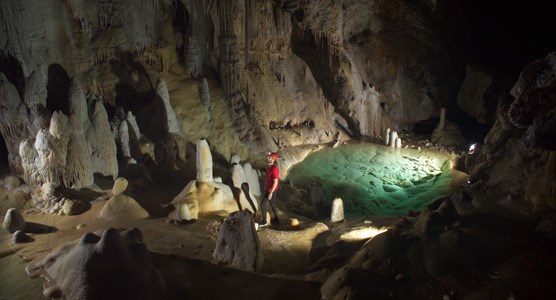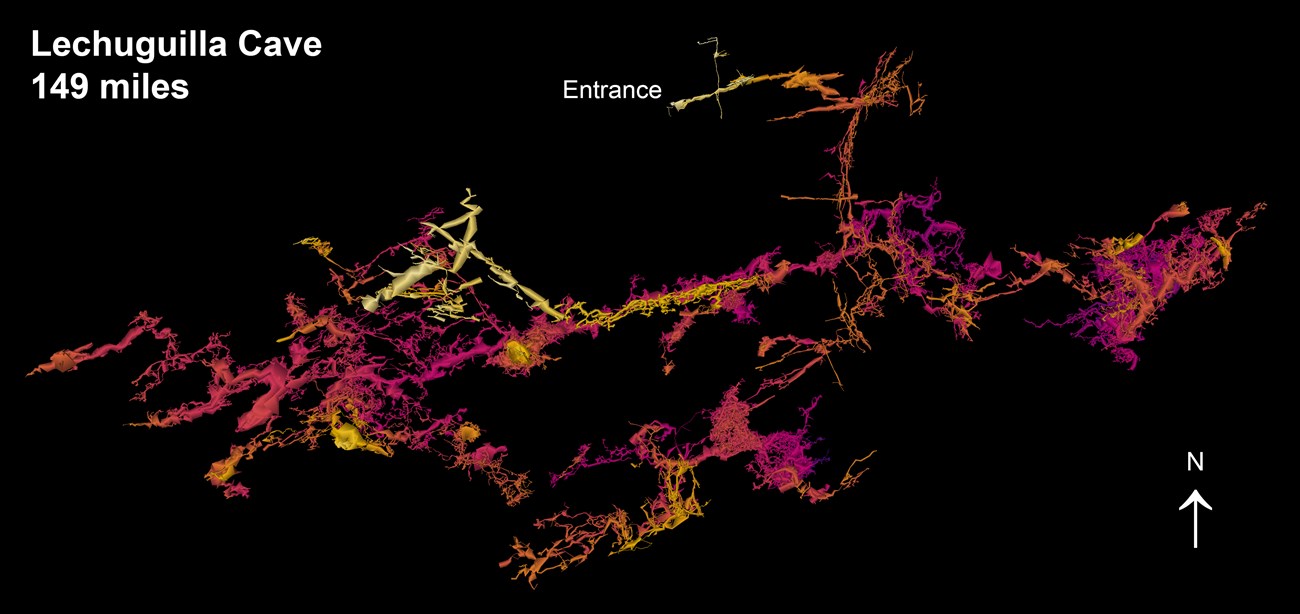
Gavin Newman Lechuguilla Cave was known until 1986 as a small, fairly insignificant historic site in the park’s backcountry. Small amounts of bat guano were mined from the entrance passages for a year under a mining claim filed in 1914. The historic cave contained a 90-foot (27 m) entrance pit which led to 400 feet (122 m) of dry, dead-end passages. The cave was visited infrequently after mining activities ceased. However, in the 1950s cavers heard wind roaring up from the rubble-choked floor of the cave. Although there was no obvious route, different people concluded that cave passages lay below the rubble. A group of Colorado cavers gained permission from the National Park Service and began digging in 1984. The breakthrough, into large walking passages, occurred on May 26, 1986. What followed has become some of the world’s most exciting cave exploration in one of the finest known caves on the planet. Since 1984, explorers have mapped over 145 miles (233 km) of passages and have pushed the depth of the cave to 1,604 feet (489 m). As of July 2019, Lechuguilla is one of the ten longest caves in the world (one of the four longest in the United States) and the second deepest limestone cave in the country. Cavers, drawn by unexplored passage and never-before-seen beauty, come from around the world to explore and map the cave. 
NPS Lechuguilla Cave offered even more than just its extreme size. Cavers were greeted by large amounts of gypsum and lemon-yellow sulfur deposits. A fantastic array of rare speleothems, some of which had never been seen anywhere in the world, included 20-foot (6 m) gypsum chandeliers, 20-foot (6 m) gypsum hairs and beards, 18-foot (5.5 m) soda straws, hydromagnesite balloons, cave pearls, subaqueous helictites, rusticles, u-loops and j-loops. Lechuguilla Cave surpassed its nearby sister, Carlsbad Cavern, in size, depth, and variety of speleothems, though no room has been discovered yet in Lechuguilla Cave which is larger than Carlsbad’s Big Room. Scientific exploration has been exciting as well. For the first time a Guadalupe Mountains cave extends deep enough that scientists may study five separate geologic formations from the inside. The profusion of gypsum and sulfur lends support to speleogenesis by sulfuric acid dissolution. Rare, chemolithoautotrophic (rock-eating) bacteria are believed to occur in the cave. These bacteria feed on the sulfur, iron, and manganese minerals and may assist in enlarging the cave and determining the shapes of some unusual speleothems. Other studies indicate that some microbes may have medicinal qualities that are beneficial to humans. Lechuguilla Cave lies beneath a park wilderness area, but comes very close to adjacent Bureau of Land Management (BLM) land. Oil and gas drilling on BLM-managed areas could leak gas or fluids into the cave's passages, killing cave life, destroying the fragile ecosystem, and threatening the safety of people inside the cave. The park is actively managing the cave and karst resources to minimize threats. Access to the cave is limited to approved scientific researchers, survey and exploration teams, and NPS management-related trips. |
Last updated: December 17, 2022
